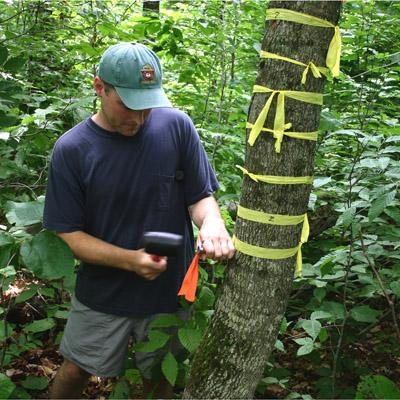An Evaluation of Soil Calcium: Aluminum Ratios, Foliar Calcium and Aluminum Partitioning, and Forest Health

Growing scientific evidence suggests that various human activities may be responsible for depleting calcium from soils in the Northern Forest. Factors cited for calcium depletion include high acid additions to forest soils from acidic deposition, which both forces calcium to be washed out of the soil and frees up soil aluminum to inhibit uptake of calcium by plant roots. Because calcium is an essential plant nutrient, calcium deficiency could impair the long-term health and productivity of forests in the region.
Scientists have linked low soil and foliar calcium to the decline of sugar maple, a phenomenon also associated with insect defoliation, drought, and freezing stresses over the past 50 years. Calcium helps plants respond to these environmental stresses and heal wounds. To explore this connection between calcium nutrition and tree stress response, NSRC researchers assessed 60 mature, wounded sugar maples at Hubbard Brook Experimental Forest in New Hampshire in 2004. Maples were growing on plots that had received 10 years of fertilization with calcium (to increase its availability above untreated levels) or aluminum (to compete with and reduce calcium availability) or on unfertilized plots that experienced untreated calcium depletion.
Researchers found greater foliar calcium, better tree crown health, increased tree growth, and improved wound healing on trees from plots fertilized with calcium compared to trees on aluminum-fertilized and unfertilized plots. These findings support evidence that calcium deficiency is an important limiting factor in sugar maple health and highlight calcium’s role in tree wound healing and stress response.
